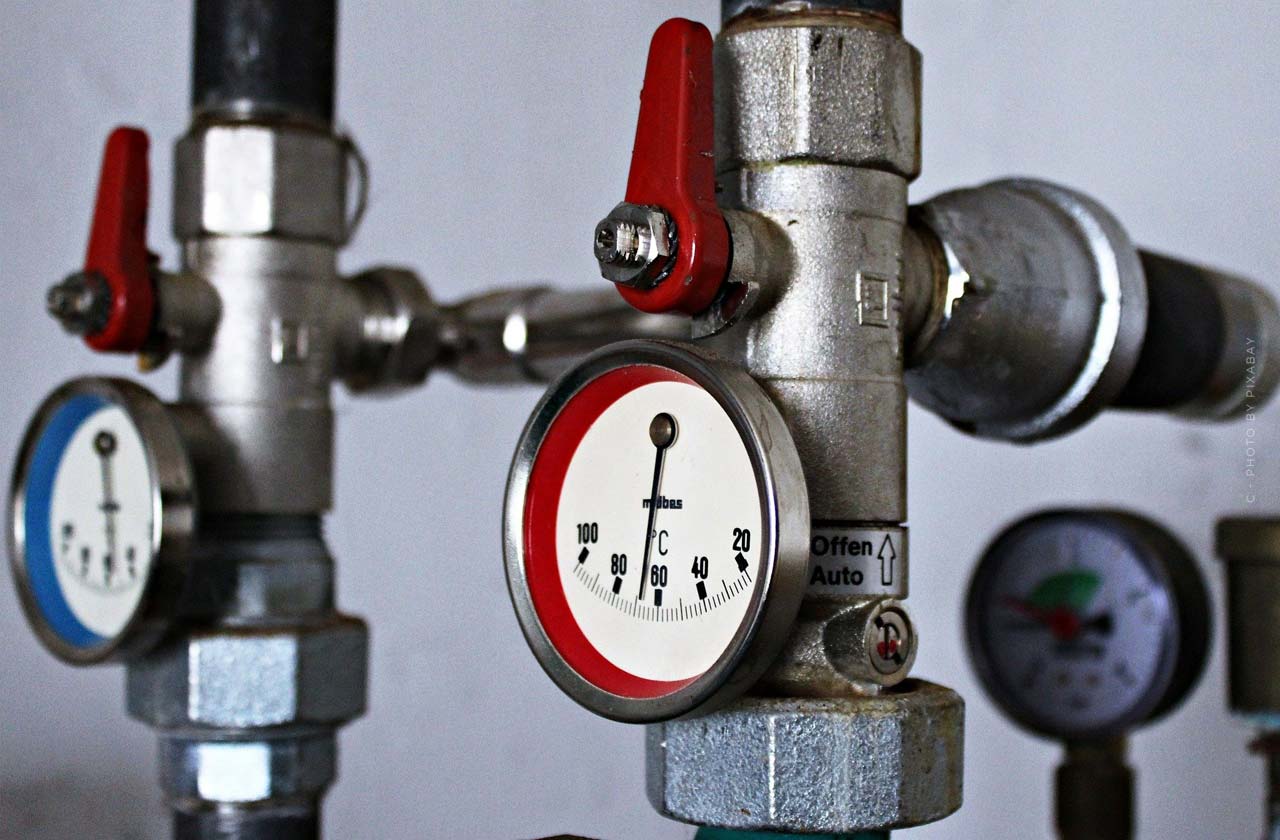Solar system calculator: Calculate your individual solar system / photovoltaic system yourself
A solar system on the roof has many advantages. Especially for self-employed people, producing their own energy not only makes sense, but can also be profitable. For all those who are considering installing a photovoltaic system on their roof, it makes sense to carry out a small calculation in advance to find out how expensive the installation of such a system will be and whether it is possible for the owner.
Photovoltaic system in 8 simple steps
Step by step – There are numerous solar calculators on the Internet that can be used to determine the approximate size of the photovoltaic system. This should help customers to estimate how large the system must be and how high the costs will be. However, many of these calculators do not take important factors into account, which is why property owners only receive inaccurate information. With our eight steps, you can calculate the individual size of the photovoltaic system you need for your home yourself. We take all factors into account and you can get a detailed picture of your investment.
Step 1 – Energy consumption per year
The primary goal of a photovoltaic system is to produce the required energy for your household without having to access the public grid. The size of your individual photovoltaic system is therefore first and foremost related to your personal energy consumption. How much electrical energy do you consume per year? You can answer this question yourself with your last electricity bill.
So the first step is to calculate your average electricity consumption in kilowatt hours (kWh) over the last 5 years (j). How has the price per kilowatt hour and the average electricity consumption changed? When calculating, you should also take into account future purchases, such as a heat pump or an electric car, i.e. everything that also consumes electricity and influences your overall consumption.
Example:
Family A has an average energy consumption over the last five years of 5,000 kWh. The acquisition of a photovoltaic system should be able to cover the majority of this energy.
Formula:
Your personal electricity consumption per year (SV)=______ kWh / j
Step 2 – Energy production of the photovoltaic system
In order for the photovoltaic system to cover your own consumption, it should supply at least 25 percent more energy than you consume over the year. The 25 percent is an empirical value that people like to calculate with. Excess energy can be ‘stored′ in a storage tank or you can feed it into the public grid. The self-consumption covered by solar energy is the part that you later no longer have to buy from energy companies, but simply produce yourself. The optimal amount of electricity production for your photovoltaic system is therefore 125 %.
Example:
Family A, which has an average energy consumption of 5,000 kWh, now calculates further with this value. Their optimal electricity production quantity is therefore 125 % x 5000 kWh = 6250 kWh
Formula:
Optimal amount of electricity produced by the photovoltaic system = 125 % x SV
Step 3 – the regional energy yield
Even if the sun does not shine 365 days a year in Germany, a photovoltaic system is still worthwhile. The prejudice that a photovoltaic system only pays off in southern countries can therefore be refuted, as global radiation averages 1,100 kilowatt hours per square metre (kWh/a) per year. The advanced technology also allows good cooling and self-cleaning of the systems, which reinforces their effectiveness.
The regional energy yield (RE) for your photovoltaic system is composed of the unit kilowatt hours per kilowatt peak and per year (kWh / (kWp x a)) and varies depending on the region. So that you can inform yourself about your region, we give here a small overview of the average kWh/m² for the individual federal states:
- Baden-Wuerttemberg: 1050-1175 kWh/m²
- Bavaria: 975-1175 kWh/m²
- Berlin / Brandenburg: 975-1050 kWh/m²
- Hesse: 975-1100 kWh/m²
- Mecklenburg-Western Pomerania: 1000-1050 kWh/m²
- Hamburg, Bremen, Lower Saxony: 950-1025 kWh/m²
- North Rhine-Westphalia: 950-1025 kWh/m²
- Rhineland-Palatinate: 975-1125 kWh/m²
- Saarland: 1050-1100 kWh/m²
- Saxony: 975-1100 kWh/m²
- Saxony-Anhalt: 975-1050 kWh/m²
- Schleswig-Holstein: 950-1025 kWh/m²
- Thuringia: 975-1050 kWh/m²
Example:
Family A lives in North Rhine-Westphalia. This federal state has an average regional energy yield of: RE = 950-1025 kWh/m².
Formula:
Your regional energy amount RE = ___________ kWh/(kWp x a)
Step 4 – the conditions of the roof
The conditions of the roof play a major role in photovoltaic systems. The roof orientation, roof pitch and shading should be taken into account when choosing your solar cells. However, the preconceived notion that only south-facing modules deliver economic yields has been disproved in recent years and it has been shown that east, west and even north-facing roofs can also deliver reasonable yields. Depending on the roof pitch and orientation according to the points of the compass, a deviation value is therefore produced. You can easily find out this composition of values for your region.
Example:
Family A has a roof that has a pitch of 30 degrees. In addition, it deviates by 40 degrees from the south. The deviation value for family A is therefore AW = 97.5 %.
Formula:
The deviation value of your property: AW= _______%
Step 5 – Avoid module shading
The location of the solar cells should be carefully considered. Shading can significantly reduce the performance of your system. This can already include general things such as the shadow of a tree, a neighbouring house, a chimney or an antenna. If such causes cast a shadow on the plant, the performance of all modules of a power string is reduced. However, pay attention to when the shadow hits your house. Since most energy is generated in the months between March and October, a shadow that hits the property only in winter is therefore less of a hindrance to performance than a shadow that hits the modules in the summer months. Depending on the type of shade, a 1-5 percent discount should be included in the calculation to account for lower power production.
Step 6 – Adjust regional energy yield
If your roof is not optimally located, so that the deviation value is not 100 percent, the deviation must be included in the regional energy yield. This is because a non-optimal roof reduces the yield somewhat.
Example:
Family A has a deviation value of 97.5 %, which must now be adjusted to the regional energy yield of North Rhine-Westphalia. Family A therefore calculates for their property: 97.5 % x 950 kWh/ (kWp x a) = 926.2 kWh/ (kWp x a)
Formula:
Personal regional energy yield (PE) = deviation value (AW) x regional energy yield (RE) = ______kWh/ (kWp x a)
Step 7 – the size of your individual photovoltaic system
With all the values you have found out, you can now determine the size of your individual photovoltaic system. For this we need the unit from step 2, i.e. your optimal electricity production quantity of the photovoltaic system and the calculated personal energy yield. If you have a larger roof area, the construction of a larger system can be considered. Please refer to our guide on the subject of solar energy.
Example:
Family A now calculates the size that your photovoltaic system must have at least. You calculate for this: 6,250 (kWh/a) / 926 (kWh/(kWp x a)) = 6.74 kWp. Your system can therefore have a size of 6.74 kWp.
Formula:
Size of photovoltaic (PV) system = electricity production / personal energy yield [PE] = _________ kWp
Step 8 – the required roof area
The last step is to calculate the required roof area. Now that you know what the minimum size of the photovoltaic system must be to cover your energy consumption, you only need to find out how much roof area you need to install the system. A typical photovoltaic module measures 1.67 m x 1 m (= 1.67 m²) and thus has an output of 300 Wp. To now calculate the roof area, we need a factor of 7 m²/ kWp, where certain open spaces have already been taken into account.
Example:
Family A has now reached the last step of the calculation. So you calculate: 6.74 kWp x 7 (m²/ kWp) = 47.25 m². Family A therefore needs 47.25 m² of their roof surface to install a photovoltaic system to cover their energy consumption.
Formula:
The required roof area (DF) = size of the photovoltaic (PV) system x 7 (m²/ kWp)







